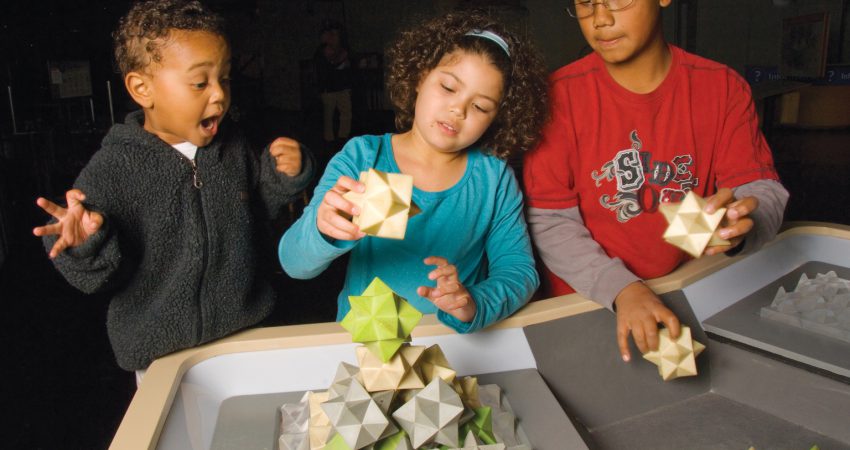
By Suzanne Perin - May 2011
PAPER CITATION
Varelas, M., Pappas, C. C., Tucker-Raymond, E., Kane, J., Hankes, J., Ortiz, I., & Keblawe-Shamah, N. (2010). Drama activities as ideational resources for primary-grade children in urban science classrooms. Journal of Research in Science Teaching, 47(3), 302-325.
WHY IT MATTERS TO YOU
ISE professionals can use this article as a source of ideas to guide thinking about what makes a successful dramatic experience for learners.
What Is The Issue?
Alternative, physical ways to engage science learners are often the most challenging to envision, effectively execute, and articulate how learning is fostered. The researchers and teachers in this study incorporated drama into science lessons to bring in fun, creativity, thinking, and imagination as part of classroom learning, and showed how the young students collectively represented the scientific world more accurately.
What Was The Study?
This study, which took place in six urban elementary classrooms (grades 1–3) with a majority of Latino/a and African American students, involved two curricular units, one on states of matter and their changes and another on life in temperate forests, including food webs. The researchers videotaped, audio-recorded, and took field notes of the classroom discourse and drama activities that took place within the classrooms (not on a formal stage). Both the actions (spatial, temporal, and material features) and social interaction between and among children and teachers were important in the transcripts and analysis. The teachers were considered collaborators and their recollections and understandings of their classrooms were integral to the analysis.
In the activities, children used their bodies to actively construct and represent what it meant to be a molecule in a certain state of matter or an entity in a food web. In the matter unit, teachers introduced the idea that matter consists of molecules that behave differently in a liquid, solid, or gaseous state. Students used drama to begin to theorize about the movement of molecules (speed), relative distance, and strength of bonding with other molecules. In the forest unit, children took on the roles of animals, plants, and nonliving entities above, at, and under a forest ground-level ecosystem to explore the complexity and directionality of the food web. Both of these drama activities involved concepts that the National Science Education Standards recommend for older children.
What Were The Findings?
The children had to learn to differentiate between their dramatized scientific world and the everyday world. For example, when children dramatized a solid melting, instead of following an initial tendency to represent melting as falling to the floor to imitate water dripping off ice or chocolate collapsing, they learned to behave as molecules by positioning themselves farther apart, moving faster, and not being so tightly bonded to each other. Teachers guided students in making connections between their dramatization and the scientific concepts through discussions which offered them opportunities to further articulate their developing understandings of matter or forests. For ISE educators who wish to incorporate kinesthetic activities or are working with underserved populations, this article may give some insights into thinking about how to gauge a successful lesson incorporating dramatic elements and the challenges in terms of making a fit between science ideas and dramatic representations.




